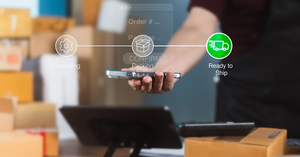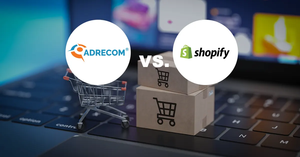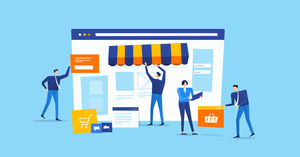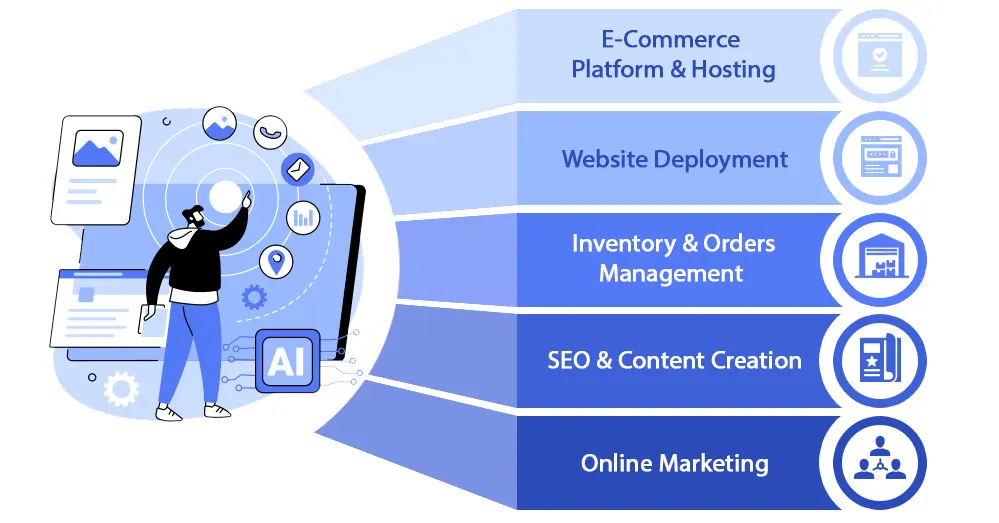
Managing an e-commerce website is nothing short of solving an intricate puzzle. The more you try to solve it, the more perplexing it gets.
It's tempting to try to unravel it by focusing on just one thing at a time, but that's not how the cost management of e-commerce websites works. What you see isn’t always what you get. Understanding the true nature of the costs requires peeling back several layers at the same time.
Countless website owners underestimate the actual cost of their website. They are unaware of the cost implications of factors such as the size and scale of their business. This is as true for setup costs as it is for maintenance, which is why you should also make provisions for the future when thinking about costs.
This guide will uncover all the major apparent and some not-so-apparent costs of running an e-commerce website.
If you are thinking of taking the leap into e-commerce, the information here will prepare you for what’s to come. And if you already have an e-commerce website but one that is leaking money, this guide will help you find the leaks that require plugging.
1. Infrastructure
Not all e-commerce sites are the same. There are many variables in website design and development costs, such as the number of transactions per month, the size of the catalog, and design customization, all of which impact the final price tag.
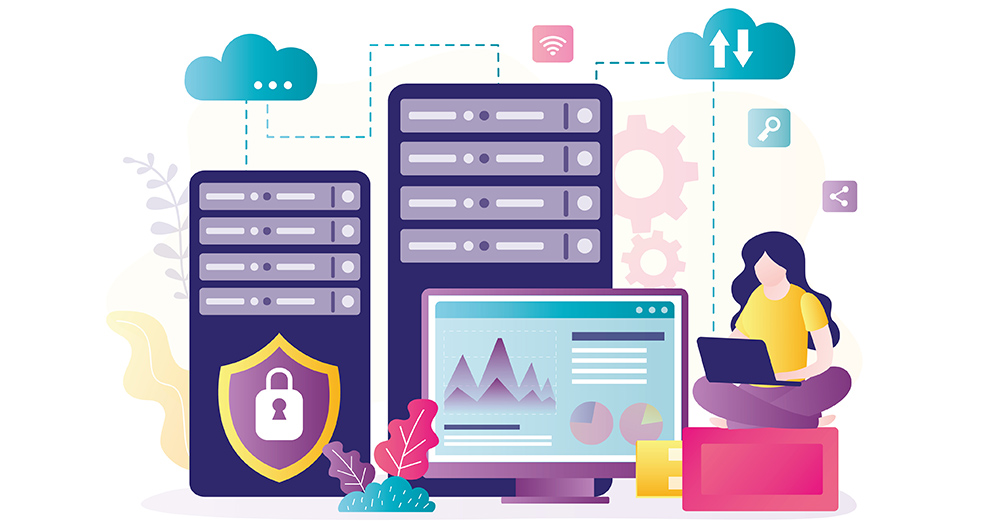
1.1 Setup costs
You can get by with a garden variety e-commerce site and get it up and running for under $200-$300. It would be serviceable for sure, but as your business scales, back-end errors and checkout crashes will be more likely. Keep in mind that the costs vary depending on the design choices of your website as well as other features that you stack on.
Investing in a sturdy infrastructure now will help you avoid these issues later.
- For a store with a catalog of 500 products or fewer, the total setup costs will be in the range of $3000 to $25,000.
- For a store with a catalog of 500–1000 products, you will need anywhere between $5,000 and $60,000 to build a feature-rich and fully functional website.
1.2 Web hosting and domain
A web host will be the location of your store, and your domain name is how your customers will find your store. Both will be ongoing expenses and crucial parts of your infrastructure.
Domain names will typically set you back by $2–$20 depending on the extension you choose, such as .com, .co, or .shop, among others. You can either renew them monthly or annually. If you want to minimize your domain-related costs, consider locking your domain name for the long term, say for 5 years, if your business strategy and startup capital allow for it.
Self-hosted servers or SaaS web hosting solutions are the most common ways for e-commerce businesses to host their sites.
1.2.1 Self-hosted server pricing:
- Small and medium businesses – $2.50–$200/month
- Enterprise businesses – $500 – $800/month
1.2.2 SaaS solution pricing:
- Small and medium businesses – $25–$250/month
- Enterprise businesses – upwards of $1,000/month
Infrastructure needs for enterprise businesses drive up setup and maintenance expenses significantly. Requirements include increased redundancy, the ability to handle high traffic volumes without slowing down page load times, and the ability to scale the whole site with little downtime.
1.3 Web development
The success of any website is determined by its design and how it presents information to the audience. Web development is crucial for the long-term viability of a website. Online marketing, SEO strategies, and improved content are all things that add value, but they come with many costs. And these components will take the biggest chunk out of your website’s maintenance.
The number of developers you onboard could have a considerable effect on the website project cost. The higher the rate, the better your job will be. You have three options to go with for web development:
1.3.1 Hiring a freelancer
If you have a small site with a catalog of no more than 50 products, it’s like you engaged the services of a freelancer. Some companies hire freelancers for specific projects, while others rely on full-time employees to manage their freelance workers.
The cost of hiring a freelancer ranges between $20 and $100 per hour.
1.3.2 Having an in-house team
You may have an in-house team of web developers or be considering having one in the future. Onboarding more developers means faster maintenance like backups, debugging, updates and hotfixes.
An in-house team will cost you $250-$500/hour, at $50-$100/hour per engineer.
1.3.3 Hiring a web development company
A web development company can help you give your customers a site that is full of features and works well. The scale of your business will determine the cost of hiring specialized web developers.
Other than back-end web development and the front-end design, a web development company also works on the following aspects of e-commerce websites:
- Design and UI
- Content design and delivery
- Digital assets
- CRM
- Web apps
- Mobile app development and optimizing the store for mobiles
- Updates and fixes
- E-commerce services
- Digital marketing strategies
The average cost of hiring a web development company:
- Small stores – $25,000
- Medium stores – $50,000
- Large stores – $75,000+
Hiring a web development company is the most expensive option, but it's also the best long-term investment if you're building a huge e-commerce company and selling across several sales channels. They will also make sure that your website is kept up-to-date and optimized so that it works well.

2. Content and Design
Storefront look and feel are the first things that your customers notice about your website. Think of this as the virtual equivalent of stepping into a plush multi-brand retail showroom. It is more than just a nice website to serve as a lead magnet, as it creates an impulse in the customers to buy from you.
The layout, the design, product pages, the checkout flow—they have the ability to make or break your sales and conversions.
2.1 Website design
Your website is your first step towards the internet's biggest prize – a customer. You want to build trust with your visitors and make the checkout as simple as possible. A well-designed website benefits users by reducing the friction for them to navigate through it, browse content, and purchase products. Your website design also ensures you are compliant with the latest web accessibility standards.
Hiring a website designer costs:
- Small businesses – $300-$800
- Medium business – $1200-$2000
- Enterprises – $2500+
2.2 Digital assets
The key digital assets of your e-commerce website include logos, themes, and product photos.
- Logo. Your store logo and favicon that sit next to your store name in browser tabs and on search results pages are mostly a one-time cost. But as you scale your business or diversify, you may want to consider revamping the logo. You can hire a freelance designer and get them to design a logo for $10-$100 or tap into online marketplaces and get your logos for a one-time price starting at $50 and going as high as $300.
- Product Photos. Product photos are crucial in generating leads and turning browsers into customers. Poor quality images can deter potential customers from purchasing a product, so all e-commerce businesses invest a good amount of money in their product photos. Depending on the size of your product catalog, product photos can cost you between $100-$1,000, oftentimes even higher.
- Website themes. Premium themes are available in the price range of $50-$200 and are a good option for bringing some flourish to the default look of your website. Many of these come packed with extra perks, meaning that launching an eCommerce store is possible without having to invest in expensive plugins and hosting. However, larger stores will need more customization and additional features such as security and redundancy.

3. Essential SaaS Costs
All e-commerce businesses, no matter how big or small, have to pay for marketing and SaaS. These costs can include SEO and blogging services, social media ads, paid promotion services, and website redesigns.
3.1 Integrated E-commerce Platform
Having an integrated e-commerce platform ensures that you don’t have to spend extra on essential services. An integrated e-commerce platform provides a single point of access for all customers, suppliers, and partners. This means that they can easily find what they are looking for and get in touch with the business owner if they want to collaborate or ask questions about their products.
Integrated e-commerce suite further offers a host of other excellent benefits, such as:
- Centralized product, catalog and inventory management: When all data and information is in one place, it becomes easier to manage.
- Intelligent merchandising: This helps in making sure that the products are displayed according to customer preferences and shopping habits.
- Storefront customization: Support for customizing the look and feel of a website.
- Tools to improve customer experience: The integrated e-commerce platform is designed to provide a personalized experience for customers which will help them make their purchase with ease.
- Dynamic promotion engine: Run promotions with ease by automating tasks like inventory management, pricing adjustments and more.
- Omnichannel marketing: Connect all of your digital channels and get a 360-degree view of your customers to make sure that you are meeting their needs.
- Email marketing campaign management tools: Allows for the creation and management of email marketing campaigns. This includes merging data from your CRM system with your email service provider's data to create a more personalized email campaign that is relevant to each customer.
- E-commerce SEO: Allows for easy optimization of your website, so it ranks higher in search engines and increase traffic to your site.
It’s worth pointing out that a powerful integrated e-commerce solution includes all of the above.
Below is the breakdown of the cost when using these services individually.
3.2 Email marketing
Email marketing services are used by e-commerce businesses to promote their products and services through newsletters and promotional emails. An email marketing service allows you to:
- Reach out to new customers
- Keep existing customers engaged
- Offer customer service
- Build relationships with customers
- Marketing automation
The cost of email marketing services can vary depending on a few factors, such as the volume of email sent, whether you use a third-party provider or your own email server, etc.
If you have a small business with a low budget, then you can opt for free services like Mailchimp and Aweber. These services offer basic features that will allow you to get started with email marketing for your e-commerce business.
However, if you have more than $5,000 or $10,000 in monthly revenue, then it would be wise for you to invest in more advanced features such as segmentation and automation.
In this case, email marketing services will set you back by $100-$500/month.
3.3 Social media marketing services
Social media marketing is indispensable. It can help you to grow your customer base and increase sales, and it’s no wonder that e-commerce businesses invest heavily in it. With social media marketing, you can:
- Increase brand awareness
- Create a community around your brand
- Improve customer service and response time
- Increase customer engagement
- Increase website traffic
- Expand your reach in international markets
The cost of social media marketing services for e-commerce businesses can range from $2,000 to $10,000 per month. The price depends on the size and scale of your business, the niche you are targeting, and the type of social media channels that you choose to use.
3.4 SEO services
SEO is a long-term investment that could potentially yield high returns. SEO agencies can charge you in the range of $2,000-$10,000 depending on the number of product pages and resources on your website.
SEO helps:
- Improve your website's visibility in search engines by working with an SEO company that has the experience required to understand your industry and target audience.
- Increase your website's organic traffic by making it easier for users to find you on the web.
- Attract more visitors to the website and convert them into customers.
- Improve website’s performance by increasing sales conversion rates and decreasing bounce rates.
- Gain a competitive edge over their competitors by providing content that is relevant to their audience's needs and interests.
- Gets more social shares and likes on social media platforms such as Facebook, Twitter, Instagram, LinkedIn, etc.

4. Integrations and plugins
Plugins and integration tools allow e-commerce businesses to add value to their websites with a range of features such as social media sharing, customer reviews, and more.
Integrating e-commerce platforms with the right plugins and services can make a huge difference in the overall success of a website. Automatically updating product inventories, managing shipping, processing orders, and integrating with customers all ensure seamless functionality.
One of the most crucial advantages of using an integrated e-commerce solution is that they enjoy native and seamless integrations with multiple plugins and services. This means that you don't need to incur any additional monthly costs for integrating payment gateways, ERP, and accounting services, inventory management systems, as these are all baked right into the e-commerce platform. They work out of the box, which means less time, money, and effort spent on incorporating and maintaining these plug-ins on an ongoing basis.
When going with an e-commerce platform without these integrations, here is how much you can expect to shell out every month:
4.1 ERP
The integration of ERP and e-commerce is essential for the success of an e-commerce website. ERP centralization of all business processes in one system makes it easier to manage orders and inventory. With the centralization of data, there is no need to input the same information over and over again. It provides a single point of data synchronization, which means that all the information is available in one place. Integration of ERP integration reduces occurrences of human error as everything is automated and can be tracked easily.
Our platform has native, pre-built connections for integrations with some of the best ERP services such as Epicor ERP, Netsuite ERP, Intuit QuickBooks, and Sage Intacct.
While these are available at no extra cost with Adrecom, they would otherwise cost in the range of $2000-$5000 per connection every month.
4.2 Payment gateway
Payment processing fees are specific to the types of payments you accept during checkout. Credit card processing fees and gateway fees from your payment merchant are costs that you can't avoid if you want to accept credit cards. Adrecom has built-in integrations with Paypal, Authorize.net, and Amazon.
4.3 Trust certificates
These are vital as they convince customers that your website is safe, and all their transactions are protected, and their information is safe. E-commerce businesses typically pay a pretty amount to get these websites audited and receive these trust certificate badges:
- SSL certificate
- Antivirus trust badges, preferably Norton and McAfee
- Money-back guarantee
- Other payment badges
These will most likely cost you $20-$100 per year on average.
4.4 Value addition plugins
Ecommerce sites integrate different plugins to give their customers a great experience. These plugins make the website more navigable, interactive, and engaging for visitors.
- Live chat allows users to contact their website's support with a live chat window. Customers can ask questions, get answers, and solve problems without having to leave their current page or sign in with another account.
- Product reviews let customers write and read reviews on your website, which helps increase the reputation of your store and generate more revenue for your business eventually.
- A wishlist plugin helps customers save products for later.
- Search functionality is another must-have for any e-commerce business.
- Abandoned cart saver allows customers to complete their checkout process later.
These plugins typically have monthly costs in the range of $50-$300 but come included in an integrated e-commerce platform.

5. Fulfillment costs
E-commerce fulfillment costs are their own different beast. It’s the process of sending a product from a warehouse or supplier to a customer. There are several types of fulfillment options, but each has its own risks and costs. With more e-commerce retailers offering free next-day delivery, the cost of fulfillment can be a heavy burden on e-commerce businesses.
Fulfillment costs are different for every order. The type of the product being shipped and its weight, order complexity, delivery speed, and volume all have an impact on the fulfillment costs.
These are some fulfillment costs that every e-commerce business has to contend with.
5.1 Warehousing
When it comes to warehouses to store your goods, there are two key factors that contribute to the cost of your storage. The first factor is the amount of space needed, which is calculated as a percentage of total cubic feet. The second factor is whether you are fulfilling in-house or through a fulfillment company.
5.1.2 In-house warehousing costs
Considering common area maintenance costs, as well as taxes and insurance, a warehouse with 10,000 sq. ft. will set you back by $8,000 to $15,000 every month.
5.2 Fulfillment centers
Fulfillment centers can fulfill orders quickly and efficiently, no matter how complex they are. Several e-commerce companies invest in specialized fulfillment centers to increase their efficiency, reduce costs, and save time.
5.2.1 Onboarding
Partnering up with fulfillment centers typically involves a one-time setup or onboarding fee. While the volume of their inventory determines the onboarding costs, they can be anywhere in the range of $100-$1000.
5.2.2 Inventory intake
Inventory intake is the process of sorting out any newly received inventory. The inventory intake fees vary with the type of inventory and the fulfillment center. On average, inventory intake typically costs $5–$25 per pallet, or $50–$200 per shipment.
5.2.3 Kitting
Some products require assembling before they are ready for shipping. Kitting is the fee for covering this. Kitting fees are flat hourly rates, starting from as low as $20 and going as high as $60. For instance, if it takes five minutes to assemble a product at an hourly rate of $30, the kitting fee for that product will be $2.5.
5.2.4 Pick and Pack
Pick and pack fees include storage, packaging, and transportation costs. A typical pick and pay fee averages $8 per order. This includes both per order and per item fees.
5.2.5 Shipping
The product's size, shipping location, and speed of delivery influence shipping costs. This is one of the largest expenses incurred for e-commerce businesses.
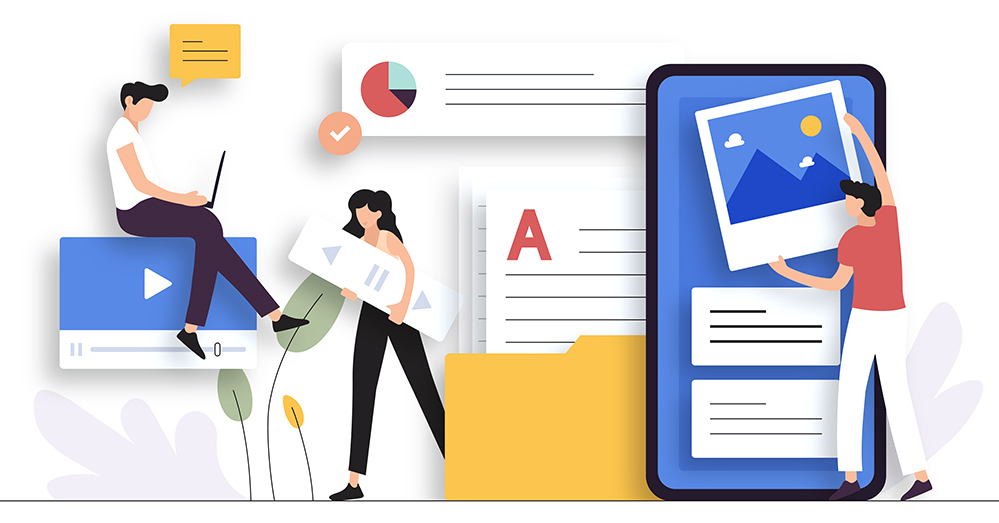
6. Hidden costs
E-commerce businesses get hit with a battery of hidden costs if their implementation or their infrastructure is lacking. There are dozens of hidden costs which, when added, reveal a direct and indirect loss in revenue.
6.1 Limitations of open-source infrastructure
Quality comes at a price. Open source may be beneficial in some cases, but web infrastructure is not one of them.
- A number of people contribute to the codebase. Your website can go down at any time, and you wouldn’t know why. Even an hour of downtime can lead to a loss of customers.
- Security vulnerabilities are harder to find and fix, as there is often no one responsible for managing security issues. Websites on open-source infrastructure can start crashing or freezing at any time.
- There's no guarantee that your code will work as expected on all browsers or devices.
6.2 Bad implementation
Many companies make the mistake of focusing on their website design and neglecting its implementation. E-commerce websites that are created without proper planning and execution are guilty of this. These companies keep pushing constant updates, wasting time and money while ignoring the root cause—bad implementation.
- Some examples of bad implementation include:
- Items keep disappearing from the cart.
- Constant checkout errors
- Your website isn’t optimized for mobile devices or loads slowly on them.
- Poorly optimized landing pages that turn your customers off.
6.3 High warehouse rentals
Warehouses are typically set up with a large amount of storage space, but the cost of rent is often so high that when you factor in costs like utilities and maintenance, it becomes difficult to tame this beast. The goal for businesses should be to find the best price for space and maximize profits, but many are struggling with this balance.
The single warehouse operating model no longer works. Finding the right balance between bulk processes to replenish stores and order-at-time fulfillment systems is crucial. When it comes to picking, packing, and dispatching patterns with fulfillment systems, striking the right balance is key. There are a variety of process variables that can help determine which pattern to use: the type of product being shipped, the size of products being shipped, and how often replenishment orders need to be filled.
6.4 Constant Returns
When online purchases are returned to brick-and-mortar stores, the onus of taking care of the returned goods isn't always on the online business. But when online purchases are returned to a warehouse, they need their own teams and facilities. All of this adds up to unavoidable costs.
Returns can be a sign of several problems, such as wrong product descriptions or images, problems with the quality of the product, or sizing mistakes. Collecting customer data and making actionable insights from your returns can help you find potential problems and people who are abusing the return policy.
Conclusion
Understanding the real cost of managing an e-commerce website is crucial if you want your business to be sustainable in the long run. You have to ensure that your website runs like a well-oiled machine and that all the back-end processes perform like clockwork while throwing no surprises. Not only that, but you have to be able to provide the features that your customers require without compromising on quality. Ensure that you are equipped with all the tools and techniques necessary for managing an e-commerce website to achieve sustainable growth. Investing into an integrated e-commerce solution now will help you keep your maintenance costs in check in the future.
